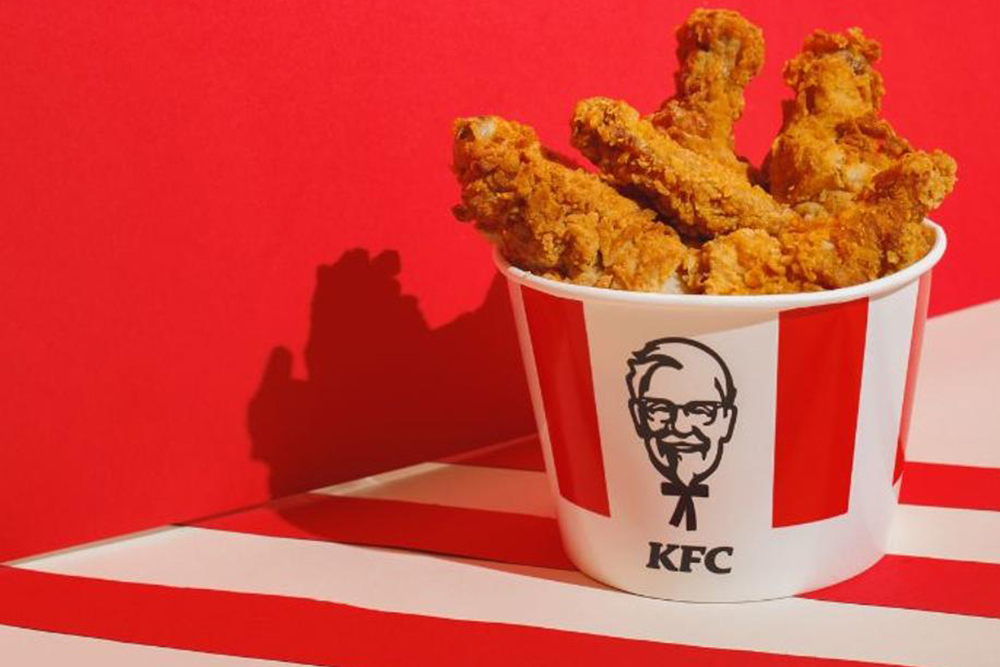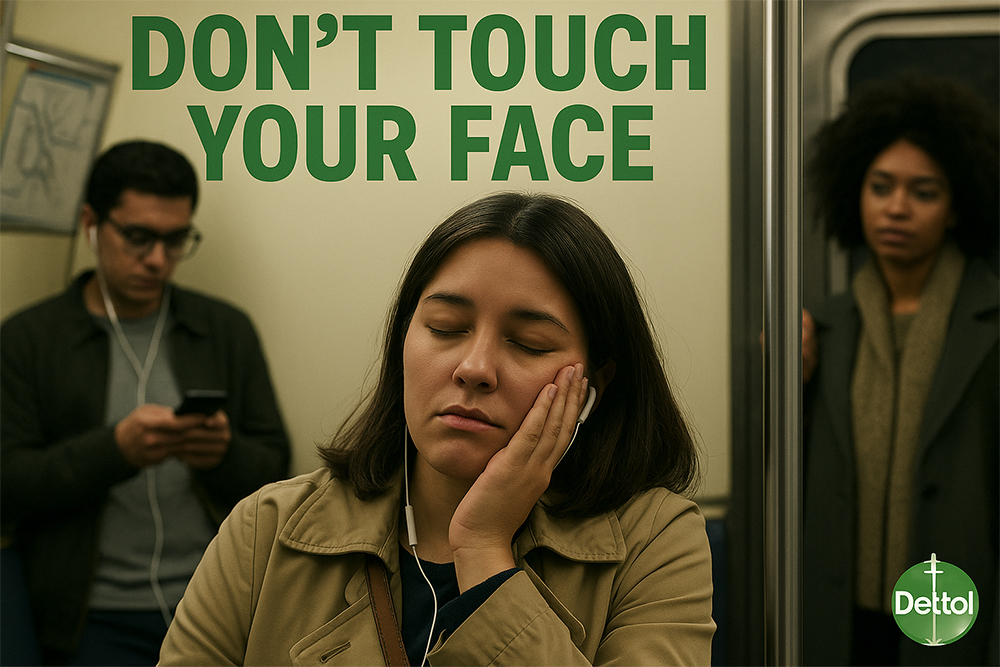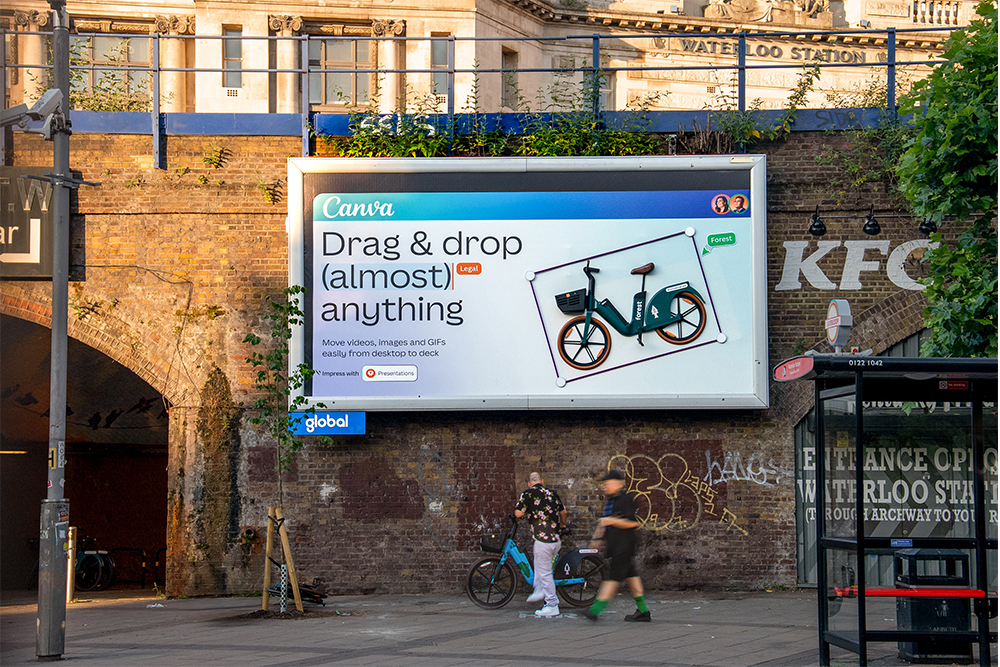Dettol’s Subway Spec Ad: A Powerful Wake-Up Call on Public Hygiene
In a world where millions share public spaces daily, personal hygiene often takes a backseat. Yet Dettol’s recent spec ad, created by Vardhanam Daga, spotlights this issue in a startlingly direct way—by visualizing the unseen. Set within the close quarters of a commuter train, the image that accompanies the campaign shows multiple hands floating just above passengers, emphasizing an invisible but universal truth:
“You don’t know how many hands you’re touching daily. Dettol kills 99.9% bacteria on your hands.”
This powerful visual triggers an instant realization: public space is shared biology. Let’s dive deep into Dettol’s marketing genius, its impact on consumer awareness, and the lessons brands can glean from making unseen risks visible.

1. Capturing an Invisible Threat: The Power of Visual Metaphor
Dettol’s spec ad doesn’t rely on statistics or fear-mongering; it uses a visual metaphor to expose the reality of public transmission. Hands suspended in the air represent the countless unseen contacts commuters make—all easily overlooked but very real:
- Subway poles
- Seat handles
- Escalator rails
- Door buttons
- Shared surfaces
The hands themselves are surreal—floating, oversized, conveying an eerie sense of contamination. Within seconds, viewers grasp: these invisible risks are real—wash your hands

2. Why This Ad Resonates So Deeply
✔️ Relatability at its Core
Commuters know the drill: crowded trains, limited space, constant touching. By embedding the ad within that environment, Dettol blasts past skepticism and lands squarely in viewers’ experiences.
✔️ Emotion Over Info
It doesn’t lecture with numbers—it evokes emotion. Slight discomfort, a twinge of guilt, even a laugh at the absurdity. That emotive pull drives action more than cold facts.
✔️ Clear Message, Simple Call
The copy is succinct: “Don’t know how many hands you’re touching daily.” People process it fast, even in a rush. Then comes the solution—Dettol kills 99.9% of bacteria. No fluff, no jargon, no delayed payoff.
✔️ Spec Ad Sharpened for Awareness
Though a spec campaign (unpaid), it’s hyper-focused on a public health issue, using a minimalist yet powerful approach to drive attention and spread impact organically.


3. Connecting the Dots: Dettol’s Larger Hygiene Narrative
This ad isn’t a standalone stunt—it’s part of Dettol’s long-standing mission of preventive hygiene. A few examples:
- Banega Swachh India campaigns at major events like Kumbh Mela, emphasizing handwashing and sanitationadsoftheworld.combestmediainfo.com+7exchange4media.com+7campaignbriefasia.com+7.
- Ongoing creative initiatives that use fun and interactivity (e.g., kids’ songs and games) to teach hygiene habits.
- Large-scale launches like the 100 g bar soap campaign that assures protection as Indians pursue big dreamsafaqs.com.
The subway ad elegantly extends this narrative to everyday commutes. It reinforces Dettol’s values of trust, family safety, and proactive health.


4. Bold Visuals, Strong Creative Direction
Dettol has a pattern of memorable hygiene visuals—some notable past efforts include:
- Hands interacting with everyday objects on escalators, remote controls, and shopping cartsswachhindia.ndtv.com+9adaddictive.com+9thestrategystory.com+9swachhindia.ndtv.com.
- Educational initiatives like “Haath Dhona Har Baar”—teaching with songs, skits, and influencersexchange4media.com.
This ad takes it further by abstracting the threat, showing hands detached from bodies—random, unsettling, impossible to ignore. The eerie, distanced aesthetic is both visually arresting and conceptually tight, magnifying the invisible risk.


5. Impact & Potential Reach
This campaign has viral potential, even if not rolled out officially. How?
- Commuter Shareability: The surreal imagery begs a photo or phone snap—a perfect candid for social media.
- Media Pick-Up: Ad blogs and creative forums will showcase the spec work.
- Behavior Shift: Even a brief glimpse can increase hand hygiene mindfulness—particularly after touching public surfaces.
All this without heavy ad spend—just smart visual storytelling.


6. Timely, Yet Timeless Messaging
In the post-pandemic world, hygiene isn’t seasonal—it’s perpetual. Everyday environments—metros, buses, markets—exist outside awareness frameworks. This ad bridges that gap, reminding viewers:
Hygiene isn’t just for schools or hospitals. It matters anywhere you touch.
With its haunting simplicity, the ad reinforces Dettol’s broader push: teaching proper hygiene habits every day, everywhere. It’s a public service wrapped in brand messaging.

7. Lessons for Marketers & Creatives
✔️ Make the Invisible… Visible
Show people what they can’t see. Health concerns become urgent when they’re made perceptible.
✔️ Context Is Everything
Drop your message into the environment it affects. Here, commuters see the ad while being the target—blurring reality and message.
✔️ Emotion Trumps Info
Visual discomfort beats stats. Emotion persuades where logic stalls.
✔️ Spec Ads Can Influence
Even unpaid creative campaigns can act as awareness drivers—if smartly conceived and visually strong.
✔️ Keep It Simple
Minimal words, bold visuals. In the rough, rushed world of public transit, that’s all you need.

8. Dettol’s Continual Hygiene Campaign Strategy
Dettol’s marketing is built on a trio of pillars:
- Education – with campaigns like Banega Swasth India and school hygiene programsexchange4media.comexchange4media.com+4swachhindia.ndtv.com+4swachhindia.ndtv.com+4.
- Social Engagement – singing jingles, street shows, celebrity endorsements, and public skits.
- Creative Visuals – ads that shine light on hidden germ storiesexchange4media.com+10adaddictive.com+10afaqs.com+10.
This spec train ad fits the mold: high creative, low cost, powerful mental imprint.


9. Possible Next Steps for Launch Campaign
If Dettol were to deploy the campaign:
- Outdoor Billboards near transport hubs—mirroring the subway scene.
- Transit Wraps on buses and metro doors—animated versions of ghostly hands.
- Digital Shorts with commuters reacting, captioned: “Ever thought about this?”
- Press and Influencer Buzz—highlighting the concept’s originality.
These channels combined offer maximized outreach and measurable brand uplift.

10. Final Words: A Sneaky Nudge Toward Cleaner Hands
Dettol’s subway spec ad doesn’t just show hands—it shows consequences. It transforms mundane behavior into a moment of introspection. Commuters see their reflection in ghostly reminders—effectively translating art into action. The invisible bacteria don’t stand a chance.
🚿 The simple takeaway?
Every surface touches countless survivors. Wash your hands. Dettol helps.
Now, every time you’re on a train or bus, take a second. Think of those floating hands. And maybe—just maybe—pause to clean up.
This spec ad is more than marketing—it’s a moment of behavioral design. Silent, powerful, and undeniably effective.










